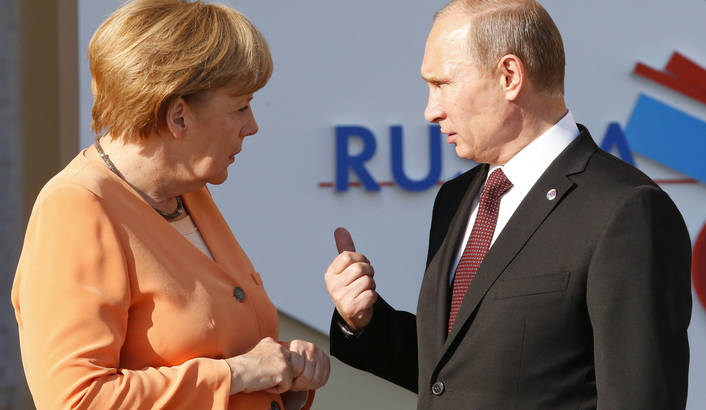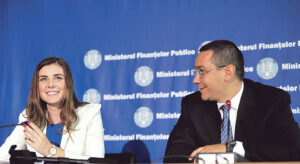Romanian President Traian Basescu expressed, at the end of the recent NATO summit in Wales, his satisfaction regarding the decisions taken there. “All the goals were achieved. The approved action plan increases the alternative and continuous military presence on our territory. We currently host about 1,400 US forces, of which 600 are marines. Their number will grow if needed. Above this, NATO decided to create a naval training centre at the Black Sea, together with Romania’s and Bulgaria’s fleets. This centre will always be fed with US military ships – exactly today an American destroyer arrived in Constanta”, he was saying.
Additionally, Romania will host a NATO command centre that “will coordinate the regional activities in Romania and Bulgaria”. Least but not last, the participating officials decided that all member states will come back to spending minimum 2% of GDP on defence, at least 20% of the amount being assigned to military equipment expenses.
All the above mentioned decisions were taken bearing in mind the crisis in Ukraine and the growing tensions between Russia and the Western block. This especially as the separatist movements in South-Eastern Ukraine openly supported by Moscow are in relation not only with the large number of Russian nationals living in the area, but also with the fact the said regions have a significantly stronger economy than the rest of the country. Shifting them under Russian de facto control would be more than a geopolitical win for Vladimir Putin’s regime.
Clear superiority?
After a period when the conflict with Russia was minimised and even denied, it looks like all the Western states understood they are facing a serious dare. And decided to act accordingly – the military decisions are accompanied by economic sanctions, which seem to already accomplish some of their goals.
If many people (especially East Europeans) feel that NATO’s firm attitude is more than welcome, there are not so few those who think the Western’s reaction is disproportionate. Especially as, put face to face, the two sides seem completely outbalanced. Russia has fewer than 150 million inhabitants, while USA and the European Union have over 800 million. Adding the over 100 million from Turkey and Canada, the NATO side comes close to a billion persons. The economic comparison is also totally unfavourable to Russia – it had in 2013 a GDP of 2,100 billion USD, 17 times lower than the amount of USA’s and EU’s GDPs. As for the military force, NATO has around three million soldiers and officers (compared to 770,000 in Russia) and about 3.3 million in reserve forces (towards two million in Russia).
Furthermore, even if the imbalance in terms of military technique is not this big (for example, Russia has 43,000 tanks and armoured vehicles, compared to about 90,000 for NATO, or 352 military ships, compared to about 1,000 in NATO), it seems there is a quality difference – a quite large part of Russian military technique is allegedly old and not well-maintained, according to Western military intelligence sources.
Moscow’s better hands
At first glance there are not too many reasons of concern for the Western side. But a careful look at the figures might suggest that, in case of an open conflict, Russia has some advantages. For example, even if it’s far from USA’s or EU’s financial strength, Moscow has a very comfortable level of public debt – only 11% of GDP, a lot below the over 80% of GDP debt level reported my most Western states. In other words, Russia has plenty of space to borrow for funding its military expenses.
Vladimir Putin’s country also has a positive trade balance (a 180 billion USD surplus last year as compared to an only 65 billion USD surplus for the EU and an almost 500 billion USD deficit for the United States). This means that, at the end of the day, the Russian economy could be, at least for a while, self-sufficient. (Of course that, from case to case, stopping the trade connections with the West could be bearable or even tragic).
The level of the strategic natural resources is also favouring Russia – 80 billion barrels of oil, compared to only 32 billion barrels for USA and EU together (there are also the 180 billion barrels Canadian reserves – however, 95% of them are oil sands). Moscow also disposes of almost 50 trillion cubic metres of natural gas towards about 11 billion cubic metres in USA and Canada and around two trillion cubic metres in the European Union. And the famous dependence on Russian gas of many European countries gives Moscow a hard to quantify privilege.
Least but not last, Russia has one of the biggest nuclear arsenals. With around 8,000 warheads (of which about a fifth active), the Soviet Union’s descendant might destroy at any give moment most of the life on Earth. It doesn’t even matter that USA, France and UK also own almost 8,000 warheads (of which almost 2,500 active). Putin having such an arsenal at hand will make the Western leaders to treat Russia extremely carefully. At least until the last moment.
United States of America
Social profile
Population: 318 million
Natural increase rate: 0.4 per 1,000 inhabitants
Life expectancy: 79 years
Average net monthly salary: 3,166 USD
Unemployment rate: 8.1%
Population below poverty line: 12%
Economic profile
GDP: 16,800 billion USD
GDP per capita (PPP): 53,000 USD
GDP evolution (2013): +2.2%
Public debt: 80% of GDP
Exports: 1,575 billion USD
Trade balance: -471 billion USD
Oil reserves: 26.8 billion barrels
Natural gas reserves: 9.46 trillion cubic metres
Military profile
Active militaries: 1.43 million
Reserve forces: 0.85 million
Military expenses: 3.8% of GDP
Air force: 5,900 combat airplanes and helicopters
Navy: 473 ships
Tanks and armoured vehicles: 34,000
Nuclear warheads: 7,315 (2,104 active)
European Union
Social profile
Population: 505 million
Natural increase rate: 0.44 per 1,000 inhabitants
Life expectancy: 77 years
Average net monthly salary: 2,700 USD
Unemployment rate: 11.5%
Population below poverty line: 10%
Economic profile
GDP: 17,350 billion USD
GDP per capita (PPP): 34,500 USD
GDP evolution (2013): +0.1%
Public debt: 87% of GDP
Exports: 2,173 billion USD
Trade balance: +65 billion USD
Oil reserves: 5.7 billion barrels
Natural gas reserves: 1.8 trillion cubic metres
Military profile
Active militaries: 1.55 million
Reserve forces: 2. 5 million
Military expenses: 1.5% of GDP
Air force: 2,400 combat airplanes and helicopters
Navy: 544 ships
Tanks and armoured vehicles: 53,000
Nuclear warheads: 525 (450 active)
Russia
Social profile
Population: 146 million
Natural increase rate: 0.2 per 1,000 inhabitants
Life expectancy: 70 years
Average net monthly salary: 800 USD
Unemployment rate: 5.5%
Population below poverty line: 11%
Economic profile
GDP: 2,100 billion USD
GDP per capita (PPP): 17,800 USD
GDP evolution (2013): +1.3%
Public debt: 11% of GDP
Exports: 515 billion USD
Trade balance: +179 billion USD
Oil reserves: 80 billion barrels
Natural gas reserves: 48.7 trillion cubic metres
Military profile
Active militaries: 0.77 million
Reserve forces: 2. 03 million
Military expenses: 4.2% of GDP
Air force: 2,100 combat airplanes and helicopters
Navy: 352 ships
Tanks and armoured vehicles: 43,000
Nuclear warheads: 8,000 (1,600 active)




